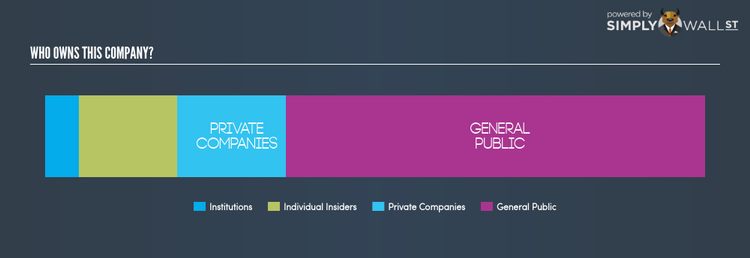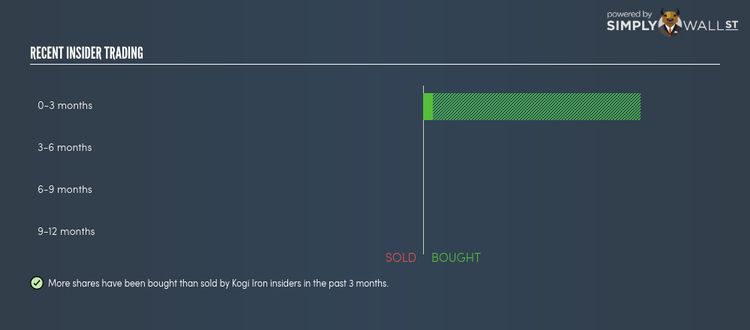What Does Kogi Iron Limited’s (ASX:KFE) Ownership Structure Look Like?

In this article, I will take a quick look at Kogi Iron Limited’s (ASX:KFE) recent ownership structure – an unconventional investing subject, but an important one. Ownership structure has been found to have an impact on shareholder returns in both short- and long-term. Differences in ownership structure of companies can have a profound effect on how management’s incentives are aligned with shareholder returns, which is why we’ll take a moment to analyse KFE’s shareholder registry.
See our latest analysis for Kogi Iron
Institutional Ownership
Due to the big order sizes of institutional investors, a company’s shares can experience large, one-sided momentum, driven by high volume of shares removed from, or injected into, the market. A low institutional ownership of 5.24% puts KFE on a list of companies that are not likely exposed to spikes in volatility resulting from institutional trading.
Insider Ownership
Another important group of shareholders are company insiders. Insider ownership has to do more with how the company is managed and less to do with the direct impact of the magnitude of shares trading on the market. 14.83% ownership of KFE insiders is large enough to make an impact on shareholder returns. In general, this level of insider ownership has negatively affected underperforming (consistently low PE ratio) companies and positively affected the companies that outperform (consistently high PE ratio). It’s also interesting to learn what KFE insiders have been doing with their shareholdings lately. Insider buying may be a sign of upbeat future expectations, however, selling doesn’t necessarily mean the opposite as insiders may be motivated by their personal financial needs.
General Public Ownership
The general public holds a substantial 63.46% stake in KFE, making it a highly popular stock among retail investors. This size of ownership gives retail investors collective power in deciding on major policy decisions such as executive compensation, appointment of directors and acquisitions of businesses. This level of ownership gives retail investors the power to sway key policy decisions such as board composition, executive compensation, and potential acquisitions. This is a positive sign for an investor who wants to be involved in key decision-making of the company.
Private Company Ownership
Another important group of owners for potential investors in KFE are private companies that hold a stake of 16.47% in KFE. These are companies that are mainly invested due to their strategic interests or are incentivized by reaping capital gains on investments their shareholdings. This kind of ownership, if predominantly strategic, can give these companies a significant power to affect KFE’s business strategy. Thus, potential investors should look into these business relations and check how it can impact long-term shareholder returns.
Next Steps:
Institutional ownership level and composition in KFE is not high nor active enough to significantly impact its investment thesis. However, ownership structure should not be the only determining factor when you’re building an investment thesis for KFE. Instead, you should be evaluating company-specific factors such as the intrinsic valuation, which is a key driver of Kogi Iron’s share price. I urge you to complete your research by taking a look at the following:
Financial Health: Is KFE’s operations financially sustainable? Balance sheets can be hard to analyze, which is why we’ve done it for you. Check out our financial health checks here.
Past Track Record: Has KFE been consistently performing well irrespective of the ups and downs in the market? Go into more detail in the past performance analysis and take a look at the free visual representations of KFE’s historicals for more clarity.
Other High-Performing Stocks: Are there other stocks that provide better prospects with proven track records? Explore our free list of these great stocks here.
NB: Figures in this article are calculated using data from the last twelve months, which refer to the 12-month period ending on the last date of the month the financial statement is dated. This may not be consistent with full year annual report figures.
To help readers see pass the short term volatility of the financial market, we aim to bring you a long-term focused research analysis purely driven by fundamental data. Note that our analysis does not factor in the latest price sensitive company announcements.
The author is an independent contributor and at the time of publication had no position in the stocks mentioned.

 Yahoo Finance
Yahoo Finance 

